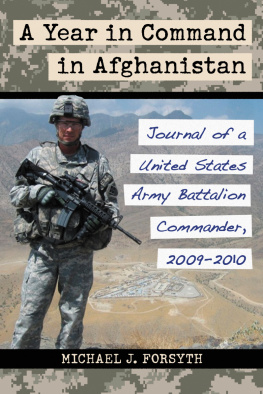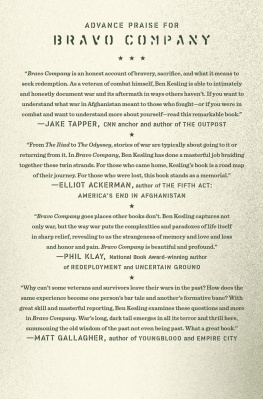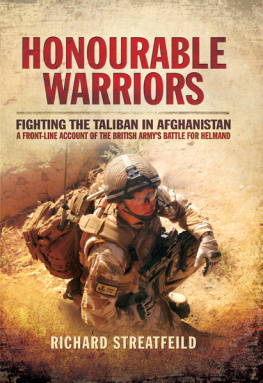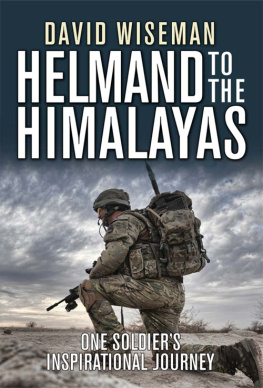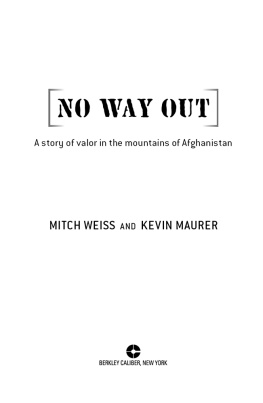Danger Close
Commanding PARA in Afghanistan
COLONEL STUART TOOTAL, DSO OBE
Stuart Tootal, 2013
Stuart Tootal has asserted his rights under the Copyright, Design and Patents Act, 1988, to be identified as the author of this work.
First published in Great Britain in 2009 by John Murray (Publishers ), An Hachette UK Company
First published in paperback in 2010
This edition published in 2014 by Endeavour Press LTD.
For Jacko
Private Damian Jackson
PARA . Killed in action
July 2006 ( aged ).
Table of Contents
Author Note
Danger Close Leading 3 PARA in Afghanistan
Colonel Stuart Tootal
In April 2006, I was privileged to lead 1,200 airborne soldiers of the 3 PARA battle group into the lawless province of Helmand. We were the first UK unit to be sent to Southern Afghanistan to support our American allies already operating in the south east of the country. Our mission was heralded and resourced as a peace support operation, but in reality there was little peace to be kept and the fighting we became engaged in has been described as the most intense level of combat the British Army has experienced since the Korean War.
Everything was in short supply; helicopters, men, equipment and ammunition and our resources were stretched to breaking point, as we fought to defend several isolated Afghan district centres against relentless attacks by the Taliban, who were intent on driving British forces out of Helmand. But with the help of our American allies and their gunships and additional helicopters, my soldiers prevailed against the odds by holding onto an area that was later to soak up over 20,000 NATO troops. The award of over thirty gallantry decorations, including a posthumous Victoria Cross, is a testament to the ferocity of the fighting and the raw courage of my troops.
Danger Close is a unique insight from a commanding officer's view of leading a battle group in action and the life the death decisions that I had to make. It is also about the nature of the manner of men who did the fighting; the austere conditions that we lived in and the challenges we faced. The book takes the reader into the sharp end of war and captures the sights and sounds of battle to provide a modern anthology of a unit in combat from the perspectives of its leader and those that made up the ranks of 3 PARA. It captures the ethos and esprit de corp s o f a close-knit elite Para troop unit, examines what motivates men to fight and highlights the sacrifices they made.
Danger Close also provides a fascinating insight into the physical and invisible scars of war and its impact on the home front, as it covers how we coped on our return from Afghanistan, where we dealt with the issues of looking after our wounded, treating those with Post Traumatic Stress Disorder (PTSD) and supporting the loved ones of those who were killed in action.
Seven years on from 3 PARAs tour there, Helmand is a very different place. The Afghan security forces now take the lead in operations as the UK and US start to withdraw their troops. I always believed in the intent of what we were trying to do in Afghanistan and history will determine the results of our endeavours. But regardless of the rights and wrongs, our participation in that troubled country has been a testimony to the courage and fortitude of British and American soldiers and Danger Close is a worthy tribute to the professionalism of those soldiers that I led and fought with.
Preface
In April 2006 the 1,200 soldiers of the 3 PARA Battle Group started their journey to southern Afghanistan. They were the first British unit to be sent into the lawless province of Helmand. Forecast as the start of a three-year commitment to bring much needed stability to a country ravaged by thirty years of war, their deployment was heralded as a peace support mission. Some who made the decision to send us hoped it would be completed without a shot being fired, but the Taliban thought differently. During its six-month tour of duty, 3 PARA fired over 479,000 rounds of ammunition in a level of sustained combat that had not been seen by the British Army since the end of the Korean War. The action took place across wild desert plains and among the foothills of the Hindu Kush. In the oppressive heat of the Afghan summer, the Battle Group fought desperately to defend a disparate number of isolated district centres against relentless attacks. Undermanned and suffering from critical equipment shortages, the intensity of the conflict stretched resources to breaking point as 3 PARA became involved in a deadly battle of attrition against a resurgent Taliban determined to drive British troops from Helmand. But it was the raw courage and fighting spirit of British soldiers that forced the Taliban to blink first. After months of vicious close-quarter fighting they won the break-in phase of the battle for Helmand in an unforgiving campaign that larger British forces continue to fight today.
The award of over thirty decorations for gallantry, including a posthumous Victoria Cross and George Cross, bears testimony to the intensity of the combat and the selfless bravery of an extraordinary band of brothers. However, as in all wars, there was a price to pay. Fifteen members of the Battle Group were killed in action and another forty-six were wounded in battle. This is their story, told both from my own perspective and that of many of those whom I was fortunate enough to know and command. It says something of the impact on their families and on those whose loved ones did not return. I have attempted to capture the essence of the fighting at the sharp end: the sights, sounds and smell of combat through a variety of different landscapes. I have also tried to provide an insight into the bigger picture issues and the difficult life-and-death decisions that were made. The following pages chart the highs and lows the Battle Group experienced and also deal with the consequences of doing the nation's bidding, both on and off the battlefield. They say something of a peacetime society where the implications of war are often poorly understood and where there have been far too many incidents of poor treatment of those who suffer the mental and physical scars of battle. But ultimately this book is about the ordinary paratrooper and soldier in battle, their remarkable fortitude, their will to combat, the privations they faced and how they accepted risk and loss as part of the business that they are in. Having once been a soldier, writing Danger Close has been both an emotional and cathartic experience; my one hope is that I have done justice to those with whom I was privileged enough to serve.
Introduction
The Dawn of Battle
The engines of the twin rotors of the Chinook helicopter screamed for power and the fuselage vibrated violently as we lifted off from our base in the middle of the Helmand desert. We were a four-ship helicopter formation carrying 1 50 members of my Battle Group. Each man carried in excess of 6o pounds of equipment and was crammed into the tightly packed interiors. The American-built heavy-lift CH-47 Chinooks were the workhorses of our RAF helicopter fleet, affectionately known as cabs by the men who flew them. They were escorted by two Apache AH-64 gunships piloted by men of the Army Air Corps. The Apaches were our muscle, each capable of delivering a devastating fire of hundreds of 30mm cannon shells from its nose gun, explosive-tipped rockets from its side-mounted pods and Hellfire 'fire and forget' missiles which could flatten a small building.
The force being lifted consisted of my Battle Group Tactical Headquarters (known as Tac), two platoons of A Company, a fire support group of machine gunners, a Royal Engineers search team and a squad of men from the Afghan Army. Full to capacity, and with every seat taken, my men sat on the floor with their legs astride the man in front. Each man was festooned with individual assault gear, belts of ammunition, scaling ladders and automatic weapons. As we gained altitude and headed out across the open desert the thick fog of fine swirling sand kicked up by the rotor blades and the caustic smell of aviation fuel were blown from the confines of the fuselage. It was replaced by a perceptible atmosphere of enthusiastic apprehension. I could see it etched on the faces of my men as they nestled among their comrades. Encased in their combat body armour and wearing lightweight Para helmets, each man was deep in his own private thoughts as they set about mentally preparing themselves for the unknown of the lawless northern interior of Helmand Province.
Next page

